Tags
"pottery"
Living in Clay Time In Clay Town: Kammy Chiu, Winter Fellowship for International Travel
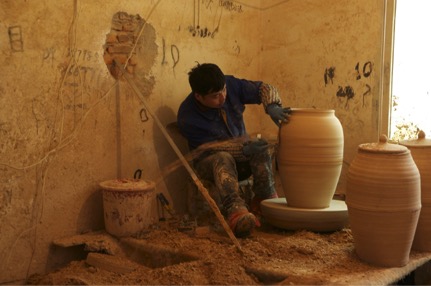
Kammy Chiu, sophomore Economics-ENV major and recipient of the Winter Fellowship for International Travel, reflects on her residency program with The Pottery Workshop in Jingdezhen, China, learning to work with porcelain.
The Pottery Workshop
My artistic residency with The Pottery Workshop (TPW) took place in The Sculpture Factory (TSF), Jingdezhen. For just over three weeks, I thought about absolutely nothing apart from clay. Three other international residents accompanied me during my time at TPW: Edith, an Israeli artist who specializes in painting porcelain tiles, Alberto, arguably one of the most knowledgeable mold-makers in the US who’s about to finish his MFA at Syracuse University, and Josh, another Reedie who introduced me to ceramics a year and a half ago.
Continue reading Living in Clay Time In Clay Town: Kammy Chiu, Winter Fellowship for International Travel
Old Thimi, Nepal, Potters of the Prajapati Community: #2
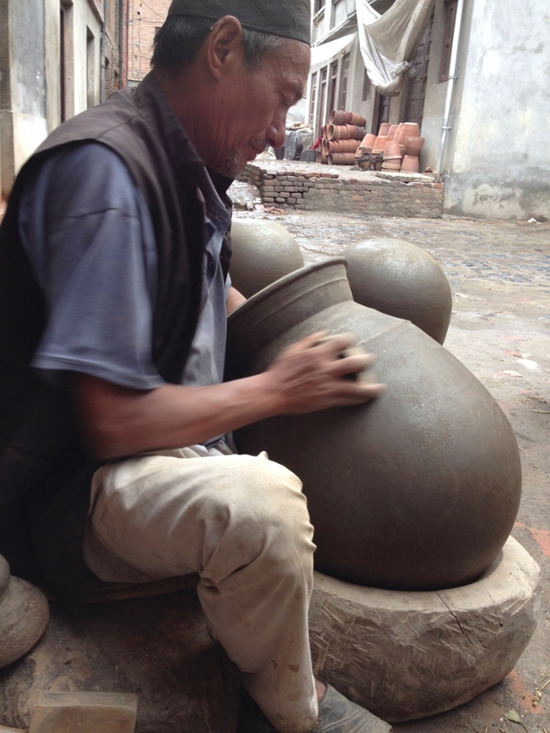
Beating pot.
A number of things have happened since my last blog post: I have turned 21, I have left Nepal, and managed to catch and rid myself of (as so many other Americans in Nepal have before me) a bad case of lice. But these lovely little creatures surprisingly turned into a bit of a blessing. By the time I had realized my new hair inhabitants I was in the midst of my final weeks in Nepal. At that point I was honestly quite exhausted, and I had begun to withdraw from both my host family and my project. I had arrived at a place where I knew my remaining time was limited, and I wasn’t sure if chasing new leads in my research could be adequately pursued before my departure. “Bria’s little friends” (as my host mother liked to call them) kicked me out of this slump. I spent about 3 hours a day for one week sitting in sun with my host family as they picked the bugs out of my hair. These lice-finding sessions prompted newfound bonds with the non-English speaking women in my family as well as further consideration of topics regarding my research.
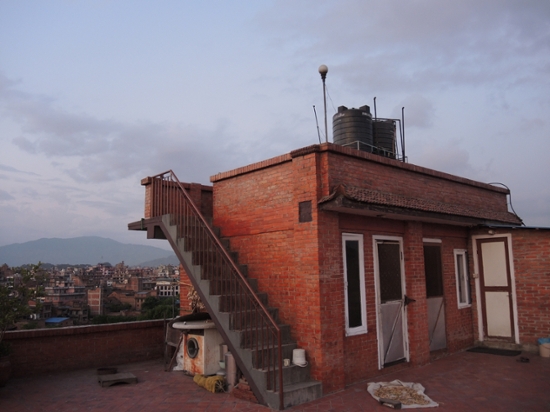
Aside from the lice, there were certainly many other challenges I faced during those last weeks. In an interview with a prominent Buddhist priest/scholar in the Newar community, we argued about what it means to be Buddhist or Hindu. The potters with whom I live self-identify as Hindu, however, all of their life cycle ceremonies (birth, puberty, marriage, death etc.) are conducted by Buddhist priests in the Buddhist way. My interviewee argued that therefore my potter friends were Buddhist. It is important to note that in the Newar community separating these traditions doesn’t always make sense, especially in the context of ritual. Why this is the case is perhaps too complicated to explore in this short blog post but will be addressed in my final project along with its implications on the ceramic vessels I study.
Continue reading Old Thimi, Nepal, Potters of the Prajapati Community: #2
Old Thimi, Nepal, Potters of the Prajapati Community
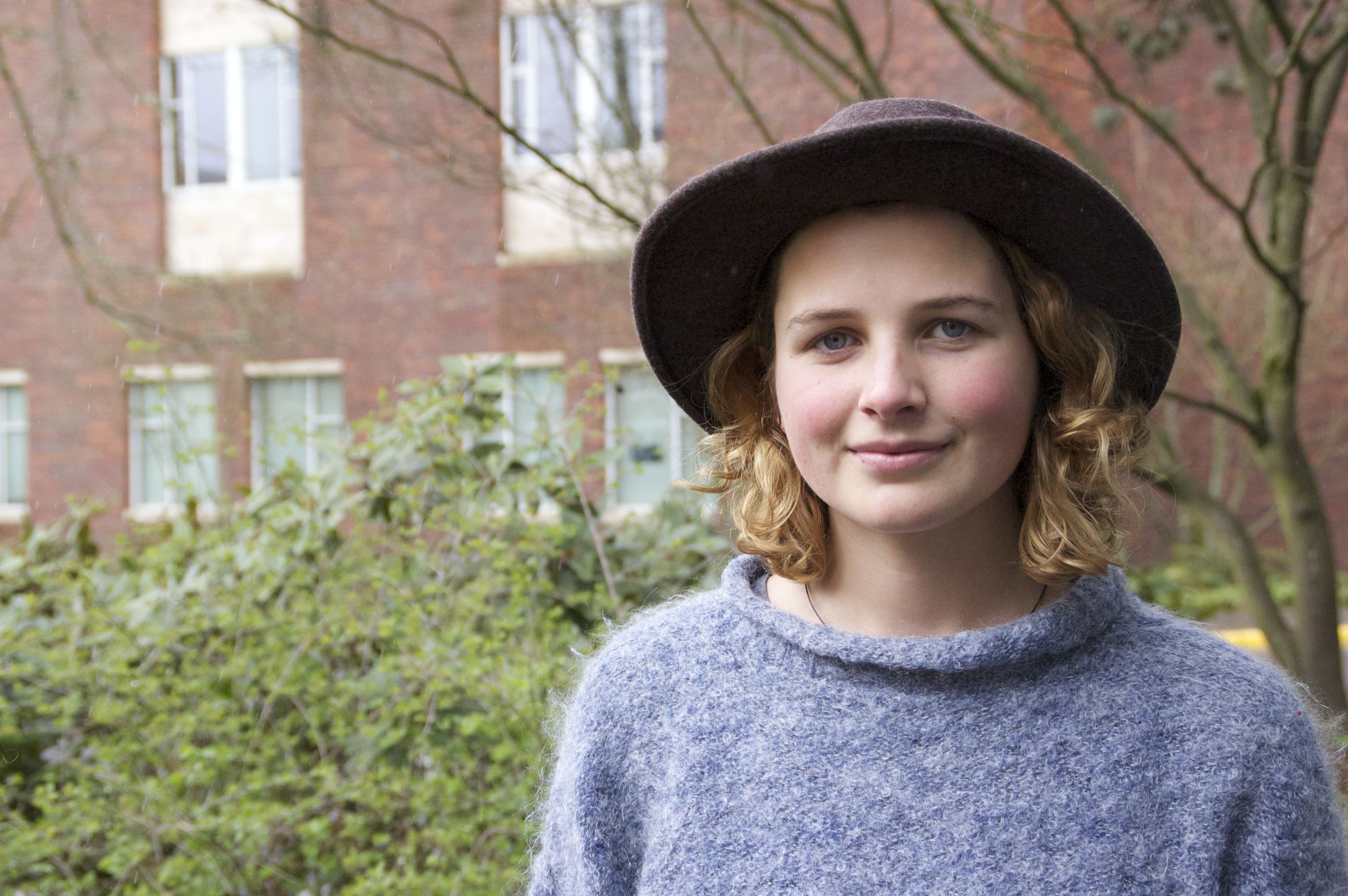
The streets of Old Thimi hum with the sounds of spinning wheels and the shuffling of terracotta, and there is a distinct scent of ash and mud. The just-thrown planter pots, whose silver bodies mingle with sleeping dogs in the sun, dry in alleys seemingly indifferent to the motorcyclists who carefully dodge by. There is always a bustle of activity in these streets and courtyards, and more often than not it surrounds some process related to pottery. Stacks of pots, dry, wet, or fired, line the streets. Piles of hay and ash wait in courtyards to be sacrificed for the transformation of wet clay into terracotta. Massive chipped water jars sit in dusty corners, bearing witness to their own extinction. In the past 50 years the ceramics industry in Kathmandu Valley has undergone significant change. What was once a booming market demanding a diversity of clay products has since significantly dwindled. Today, one finds few potters making anything besides planter pots, rice beer distillers, and popcorn bowls, which betray Thimi’s reputation as home to the craftsmen who throw the largest pots in all of Nepal.
Continue reading Old Thimi, Nepal, Potters of the Prajapati Community
Vishnus Discus: Briana Foley Researches with Newa Potters of Nepal
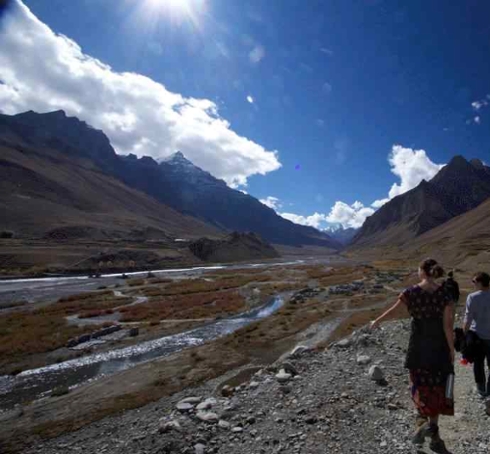
Briana Foley, a junior religion major, chased her newly kindled passion for ceramics to the edges of the earth. She spent four months abroad through the Tibetan and Himalayan Peoples SIT program. She concluded her trip by pursuing independent research in the settlement of Old Thimi in Kathmandu Valley. The indigenous settlement is home to the Newa people, an integral part of whose culture and lifestyle is ceramics.
Briana “became obsessed” with ceramics after taking an intensive course at Lewis and Clark. She also knew she was interested in traveling to South Asia after taking classes on Hinduism with Mari Jyavasjarvi, a visiting religion professor. These were her loves, and through the SIT program she was able to find a way to synthesize the two and create an original, exhilarating, and rewarding experience for herself.
She glows when she speaks of her time in Old Thimi. Her smile is radiant as she describes living with the community of potters, and the way she came to love the noise and chaos and the rawness of land and the people. Her eyes are alight with memories and every word about her experience and what she learned is bursting with unveiled excitement.
Continue reading Vishnus Discus: Briana Foley Researches with Newa Potters of Nepal
